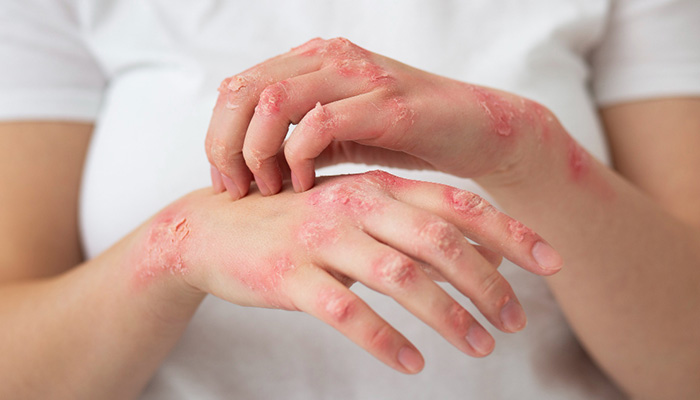You have just returned from a two day hiking trip in the woods. A week passes and you feel feverish, get muscular aches, experience nausea and loss of appetite. It then occurs to you that the only difference this time was the number of times you saw ticks on your body. Ticks are blood-sucking parasites that cause several diseases by being vectors and carrying certain kind of bacteria. A visit to a doctor confirmed a diagnosis of Ehrlichiosis, a newly emerging tickborne inection.
Overview
Ehrlichiosis is a newly recognized disease, first described in 1990, caused by rickettsial-like bacteria of the genus Ehrlichia, and transmitted to humans by the bite of a tick. A majority of Ehrlichiosis cases have been observed in many parts of the United States, especially during spring and summer seasons, when ticks are active and people enjoy being outdoors. Currently, two types have been identified; Human monocytic ehrlichiosis (HME), caused by Ehrlichia chaffeensis and Human granuolocytic ehrlichiosis (HGE), caused by Ehrlichia species yet to be confirmed. Here, the rickettsial organisms attack the white blood cells of the body, the monocytes and granulocytes. HME has been observed in southeast and south-central regions of the United States, while HGE has been found mainly in upper Midwestern and northeastern states.
Transmission
Based on research and evidence, it has been observed that the Lone Star tick transmits HME, while the Deer tick transmits HGE. Infections can also be transmitted through contact with animals (white-tailed deer, coyote) that harbor the ticks. When feeding on a healthy host, the infected tick transmits the rickettsial organisms, which enter the skin and reach the bloodstream. An infected tick would be attached to the host’s body and feeding for at least 24 hours, prior to transmission of infection. Ehrlichiosis may also be transmitted via blood transfusions, from mother to fetus, or through direct contact with an infected and slaughtered animal.
Signs and Symptoms
Following a tick bite, it takes around 5 to 10 days for symptoms to appear, and many times, no signs of illness are seen or symptoms developed are very mild.
Flu-like symptoms develop that include:
- Fever
- Chills
- Headache
- Muscle ache
- Nausea
- Vomiting
- Diarrhea
- Fatigue
- Confusion
- Skin rash (common in children)
In most cases, the body can fight off the infection without treatment when symptoms are mild or not present. At times, the infection can become serious, requiring hospitalization, with symptoms like seizures, breathing difficulty, kidney failure and coma.
Diagnosis
It is important to inform the doctor about visiting a tick prone area, or being bitten by a tick once the symptoms appear, even though mild. The diagnosis is carried out based on clinical signs and symptoms, as well as laboratory tests for blood samples. Laboratory findings indicative of the infection include low white blood cell count (leucopenia), low platelet count (thrombocytopenia) and elevated liver enzymes. Certain blood tests include Polymerase chain reaction (PCR), which helps to identify genes unique to ehrlichiosis, and Indirect Fluroscent antibody testing (IFA), to measure the amount of antibodies produced as a result of infection.
Treatment
Antibiotics, such as doxycycline are the choice of treatment when ehrlichiosis is diagnosed. Results are best when the treatment is started early and in most cases there is full recovery.
Prevention measures
Certain precautions can be taken to avoid getting bitten by ticks and getting infected. Ticks are found in areas with tall grass, bushes and other such foliage areas. When outdoors in such areas, wear light-colored clothing so that the ticks can be observed and removed. Wear covered footwear, instead of open-toes sandals or shoes, as ticks tend to attach themselves to lower legs and feet. Try to tuck trousers into the socks and boots and wear long sleeved shirts. Repellants like diethyltoulamide (DEET) can be applied to exposed skin areas, but in children, it should be used with caution. Permethrin is an insecticide than can be sprayed on clothing and boots, to kill the ticks. Try staying on clear trails and paths, where there might be fewer ticks. Keep long hair tied back, as ticks can attach themselves to dangling hair and crawl to the neck or scalp. On returning home, search the body and clothes for ticks, including any pets if present.
Dealing with ticks
If a tick is found on the body, removing it within 24 hours of it’s attachment, will reduce the chances of infection setting in. For this, gently remove the tick using a pair of flat-tipped tweezers, or by hand covered with gloves or tissue. Grab the tick at it’s mouth parts, and then pull it up and out of the skin. Grabbing from the body or pulling too quickly can leave the mouthparts behind in the skin. Ticks engorged with blood should be removed with care and not crushed, as this can result in transmission of infection. After removing the tick, dab the bite site with alcohol or an antiseptic, and wash the hands with soap. Petroleum jelly, hot matches and other such materials should not be used for removal, as this will only trigger further infection. Options are to kill the tick on removal by placing it in alcohol solution or save it in a jar for identification at the doctors in the event of becoming ill. Observe the bit site for the next few days and visit the doctor if there is any redness, signs of a rash or fever developing.
Be wild but wary
Everybody enjoys camping, hiking and other outdoor adventures, especially during the seasons of spring and summer. But then, there are plenty of other creatures sharing the same environment with you. Hence, being aware of the presence of ticks and taking necessary precaution will help protect against tick borne infections like ehrlichiosis. Enjoy your adventures in the wild, but remember that it is best to be prepared and know the course of action to be taken in the event of a tick bite.



